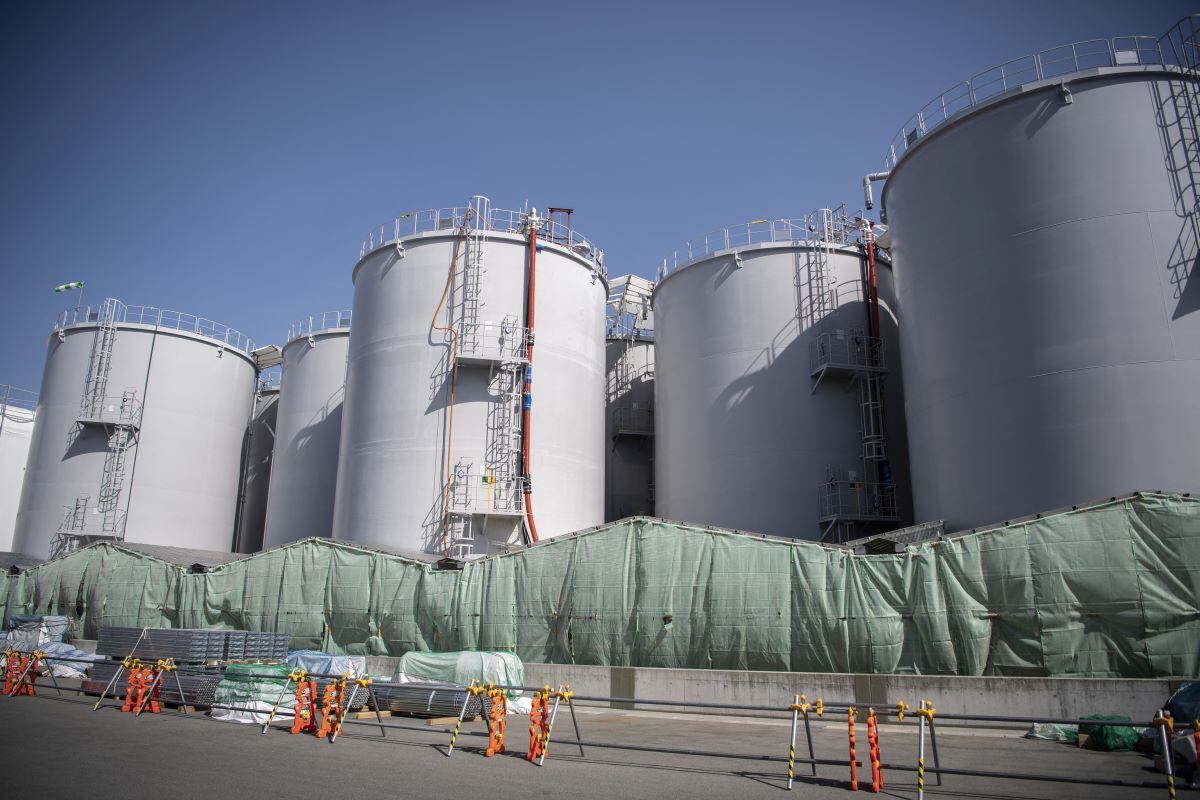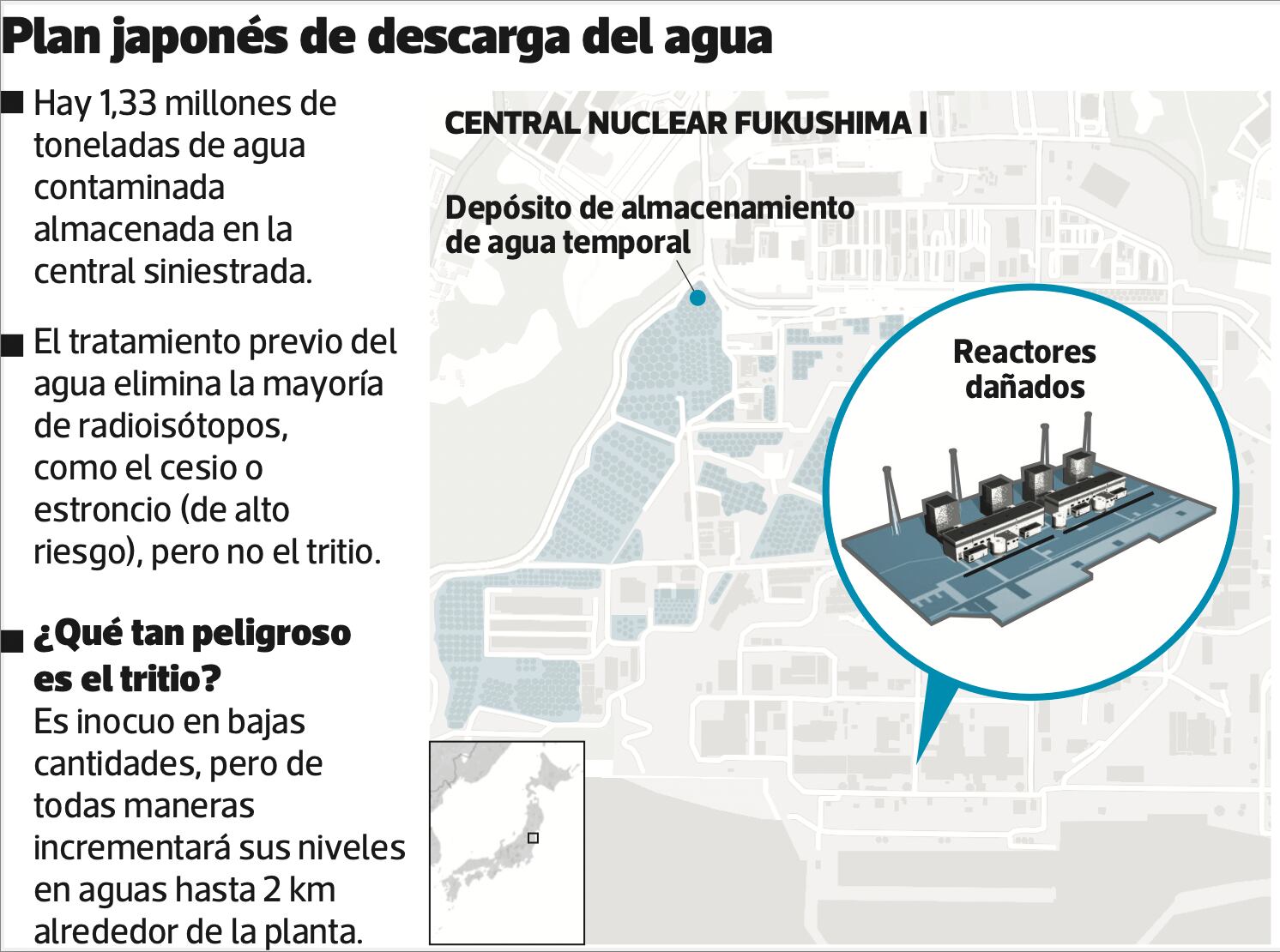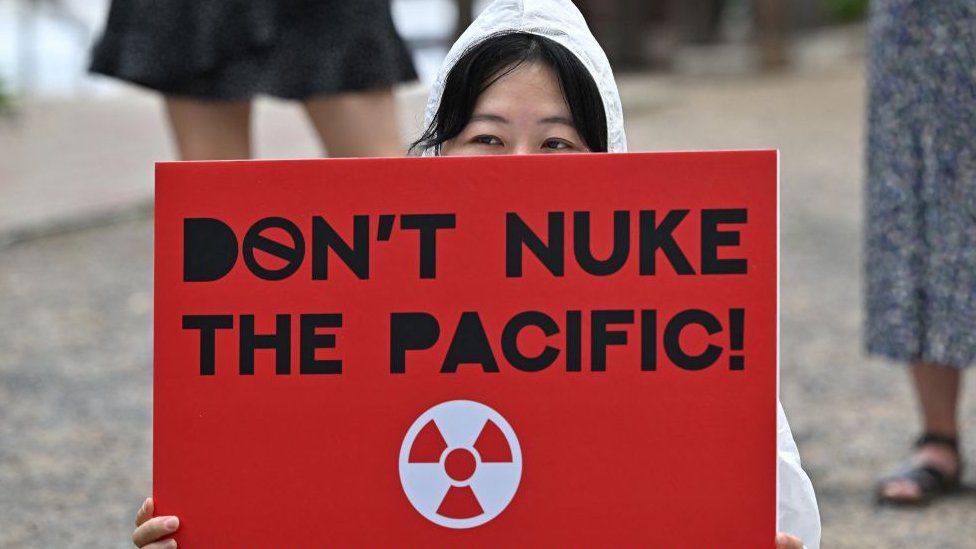The nuclear tragedy of fukushima shook to Japan 12 years ago, but its aftermath still threatens and alarms humanity. The Asian country is getting ready to implement a controversial plan to dump tons of radioactive and purified water into the Pacific Ocean from the nuclear plant damaged by the earthquake and tsunami on March 11, 2011.
LOOK: María Corina Machado disqualified in Venezuela: “Maduro’s logic is not to let any candidate who could win him participate”
The center of the Japanese strategy is the Advanced Liquid Processing System (ALPS) that was installed at the Fukushima Daiichi nuclear power plant, whose reactors were destroyed, and consists of processing the water as many times as necessary to reduce to non-existent levels or the most dangerous radioactive materials to a minimum.
It also reduces the concentration of tritium, a naturally occurring radioisotope in the environment, afterwards and before discharge into the sea.
One of the problems is that ALPS is capable of removing 62 high-risk radioisotopes, but it cannot remove tritium or completely remove other radionuclides such as carbon-14 or iodine-129, as Japanese and other scientists and environmentalists have warned. parts of the world.
The US Association of Marine Laboratories (NAML), for example, warned last December of the “lack of adequate and accurate scientific data” to support the safety of the spill, in contrast to “abundant data that raise serious concerns” on that measure.
Despite the controversy, the International Atomic Energy Agency (IAEA), the UN nuclear agency, approved on Tuesday the Japanese plan to dispose, after adequate treatment, of 1.33 million tons of contaminated water, stored at the damaged plant.
According to the IAEA report, the purification process is reliable and once released into Pacific waters, the spill will have a “negligible” radiological impact on human health and the environment.
IAEA Director Rafael Mariano Grossi has observed in recent days where the water is treated before being transported by black pipe from the sampling and mixing tanks to the coastal facility where it is diluted at least 100 times with seawater. It will then be discharged into the Pacific Ocean one kilometer offshore through an underwater tunnel.

risks and promises
Although the official date has not yet been announced, local media say that Tokyo Electric Power (TEPCO), owner of the Fukushima nuclear power plant, is scheduled to start the spill in August.
Although those responsible for the project ensure that the liquid that will be poured into the ocean for decades does not differ from that discarded in a conventional nuclear power plant, the rejection has become visible inside and outside Japan.

A hundred people demonstrated on Wednesday the 5th in front of TEPCO’s Tokyo headquarters to protest the dumping of contaminated and treated water into the sea. “The IAEA is a nuclear promoter. It is contaminated water, no matter how much you want to call it treated. With this name change they are only trying to confuse”said Sakuko Yokota, an 80-year-old protester quoted by the Efe agency.
In addition, local fishing organizations reject the plan because they fear the damage to their reputations even if the catches are not contaminated.
Abroad, the Chinese Foreign Ministry stated that “Japan unilaterally decided to dump its used nuclear water into the ocean. It minimizes its own costs and risks by leaving the rest of the world to bear the inevitable risk of nuclear contamination.” While in South Korea there were citizen protests against the Japanese plan.
Ken Buesseler, director of the Center for Marine and Environmental Radioactivity at the Woods Hole Oceanographic Institute (USA), believes that the data provided by TEPCO show “that the system does not work” to remove all dangerous radioisotopes.

“No one is going to die from this, nor is the Pacific going to become a nuclear dump. But don’t set a good precedent,” the expert told Efe, who defends that Japan should explore alternatives to oceanic discharge in greater depth.
Grossi defended before the inhabitants that the role of the IAEA was not to “cover up” something “bad”. The plan is “a general practice accepted and observed in many parts of the world,” he said.
more transparency
The newspaper “The New York Times” notes that the water that Japan plans to discharge into the Pacific was mainly used to cool damaged reactors at the Fukushima power plant. “The Asian country says it needs to release the water that is currently stored before the plant runs out of storage space.”

Azby Brown, principal investigator of Safecast, an independent radiation monitoring group, explained to that medium that one of the main problems for rejecting the Japanese plan is that a significant number of good scientists feel that the data presented so far has been incomplete.
Although he points out that the health risk posed by the released water will be “very low and of a magnitude thousands of times less than the daily exposure” to radiation, the expert emphasizes that “the entire process has not been sufficiently transparent.” “It hasn’t been inclusive, and it hasn’t been exhaustive.”
Source: Elcomercio
I am Jack Morton and I work in 24 News Recorder. I mostly cover world news and I have also authored 24 news recorder. I find this work highly interesting and it allows me to keep up with current events happening around the world.

:quality(75)/cloudfront-us-east-1.images.arcpublishing.com/elcomercio/MB7KF6TP6FCIDNHI24TQLC5UJA.jpg)

:quality(75)/cloudfront-us-east-1.images.arcpublishing.com/elcomercio/B2NFBY4FE5HIRAL7O2XADJ5V7Q.jpg)


:quality(75)/cloudfront-us-east-1.images.arcpublishing.com/elcomercio/CAOH274MH5DLDG6WROURM6GAHA.jpg)
